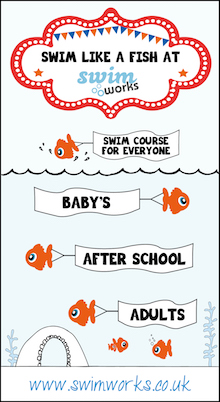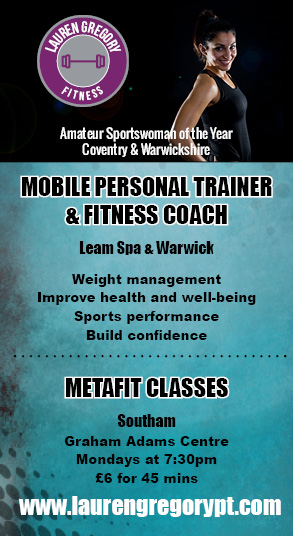“Your child has got something wrong with her heart” are not words any parent wants to hear, but I can remember hearing them as if it were yesterday.
Let me go back a few months, or even years! After 6 years of trying to conceive, fertility investigations, IVF, a laparoscopy to remove a cyst from my left ovary and 3 miscarriages, you can imagine our surprise finding out I was pregnant with a natural conception!
I didn’t have an easy pregnancy — I had 3 scans before my 12 week one due to spotting, had a night in hospital at 16 weeks after a big bleed and we were convinced we’d lost her, another bleed at 21 weeks, I found out I had gestational diabetes at 28 weeks and, at 31 weeks, Kirsten kept falling off the growth chart, so I had to have regular monitoring at the hospital twice a week, and scans and consultant appointments every 2 weeks.
At 36+4, Kirsten had fallen off the growth chart, again, and my consultant decided it was time to ‘call it a day’ so I was booked in to be induced. Kirsten was born at 3.19am on Saturday 20th November 2010, weighing 5lbs 4oz, and it was the happiest day of our lives. She was taken to SCBU as she came out ‘grunting’ and to have her blood sugars monitored for 24 hours due to my diabetes, but my husband and I were on cloud nine – after 6 years, we finally had a baby of our own.
Our elation was short lived, however, as 3 days after she was born, during a routine ward round in SCBU, the Registrar seemed to take a little bit longer listening to Kirsten’s heart/chest. Al (my husband) and I kept glancing at each other, wondering what was happening, then Dr E went to see the consultant who was with a poorly baby in another room. A coldness settled over me, a coldness which I can still remember. Al gave me a hug, but we were both dreading what we were going to be told. Dr E came back in and asked to talk to us in ‘the quiet room’ and one of the nursery nurses who was looking after Kirsten that day came too.
“I’ve just listened to your little girl’s heart and I can hear a murmur. I’m really sorry to have to tell you this, but your child has got something wrong with her heart,” Dr E said. I didn’t hear anything else he had to say. Our little girl has got something wrong with her heart. Our little girl has got something wrong with her heart? What? Why? Who are you to tell me this? All these thoughts went through my head, but I just sat there in a daze – our little girl has got something wrong with her heart. When Dr E left, the tears just started to flow, both mine and Al’s mixing together. Our little girl has got something wrong with her heart.
When Kirsten was 5 days old, the consultant came with a scanning machine and did an echocardiogram (an ultrasound scan of the heart) on her and we discovered she had been born with a congenital heart defect called Tetralogy of Fallot (TOF) and she was being referred to Birmingham Children’s Hospital (BCH) as she would need open heart surgery before she was one if she was to survive. (TOF is a hole between the bottom two chambers of the heart along with a restriction between the heart and the lungs)
Kirsten also decided that this was the day she’d stop feeding, so they put a nasal tube in so her feeds could go directly to her stomach. With the stress of her heart and now her not feeding properly, my milk dried up and it didn’t matter how much I tried, it just wasn’t there. At this point I felt a complete failure – I couldn’t even feed my poorly baby.
The hospital wanted us to be seen at BCH before we were discharged, and nearly two weeks after Kirsten was born, the baby ambulance turned up to take her to BCH. Watching the paramedics strap her into the ambulance incubator, my heart missed a beat, then they told us to give her a kiss and follow them in our car.
We got to BCH and quickly found Heart Outpatients. Kirsten was already there, and had slept all the way! She didn’t like having a further echo and ECG and let everyone know the only way babies can that she was not happy. Dr S then sat us down and explained everything to us, what her care plan would be, when she’d go on the waiting list for her repair, what we needed to look out for (there was a chance she could be a ‘blue baby’ and he advised us what to do if that happened) and they gave us an appointment for 2 weeks later for her to be seen again.
This was the beginning of the next 9 months of Kirsten’s life. Backwards and forwards to BCH for monitoring, weighing, echoes and ECG’s, with open access to the children’s ward at our local hospital if we’re ever concerned. When she was 3 months old, she was put on the medication propananol which helped stop her become a blue baby. In April, when she was 5 months old and weighed 6kg, which was the minimum weight for her op, she was put on the non-urgent waiting list to have her repair.
The next few months dragged, but Kirsten thrived – you’d never have known there was anything wrong with her. The only thing she couldn’t do was tummy time as she got very breathless when lying on her front, so when all her friends were starting to crawl, she would just sit there and watch.
Two months of waiting for her op became three, and then we were called into BCH to go through the procedure for her op. As much as I didn’t want to know what was going to happen to her, I needed to know. We were shown pictures of babies who’d had open heart surgery at various stages, but I felt a bit detached from it all, if I’m honest, as they weren’t photos of Kirsten. We were shown around Paediatric Intensive Care Unit (PICU), couldn’t get over how busy and noisy it was, and were then taken to the ward where she’d spend her recovery. I couldn’t fault the hospital in anyway as it was colourful and lively, and every member of staff we came across was really lovely.
In the last week in August, the letter we’d been waiting for, but dreading, finally arrived with her date – Tuesday 13th September 2011. She would be 9 months old. With my heart in my mouth, I phoned Al to tell him. I cried myself to sleep that night — I was about to give permission for someone to cut open my baby’s chest, stop her heart and operate on it. How could I let them do that to her? It took some straight talking from Al to tell me that we didn’t have a choice.
Early morning on Monday 12th September, we had to phone BCH to make sure she had a bed, were given the green light and got dropped off there. It was a very strange day full of tests, filling in charts and monitoring, and it was all very surreal. We also met her surgeon, Mr B, who was very reassuring, explained everything to us, and told us Kirsten was first on his list for the following morning, 8.30. We had a room in Ronald McDonald House (RMH) next door to the hospital, which was like a big, self-catering hotel with a big open plan kitchen/sitting/dining room on each floor with the idea you’d get to mix and talk to other families who were going though something similar, or completely different, but all with one thing in common – you all had a sick child.
Monday night, Kirsten took ages to go to sleep even though she was shattered. I hardly slept that night, and at 4am, a nurse came to attach Kirsten to a drip – it suddenly became very real and very scary. I didn’t go back to sleep after this and Al arrived back on the ward earlier than expected.
The emotion of the morning leading up to her op was above and beyond anything I’ve ever experienced before. We were trying to hold it together, give her a bath, dress her in an operating gown, and generally trying to not show her any of our worries and concerns. A nurse came to get us at 8.20 and walked us over to the operating theatre. While someone was talking to us, someone else snuck in behind Kirsten to give her her premed into the catheter in her hand, and she quickly went to sleep. Al laid her on a table, we both gave her a kiss, and left. I left a massive part of me in that operating theatre that morning and once back at RMH, I started crying and really struggled to stop.
Aimlessly walking around Birmingham, trying to kill time whilst Kirsten was in theatre was even more emotional than the time before her op. We both walked around with our mobiles in our hands in case someone tried to contact us and we didn’t hear the phone, and if we walked into a mobile dead spot, we soon got out of there. After a while, I just knew we needed to go back, so we went to sit in our room at RMH waiting for the phone to ring to tell us where she was.
The phone call eventually came through at 1.12pm to say she was on PICU. It was such a relief, but we still didn’t know how she was. Seeing our baby lying on an enormous bed with tubes and wires coming out of various parts of her body, a breathing tube taped to her face, a strip down the front of her chest where they’d cut her open, bandages on her hands and ankles keeping wires and monitors in place, is something a mum should never have to see on their child, but there she was, and there was nothing I could do to help her.
She spent 24 hours on PICU, we weren’t allowed to stay the night there, but knowing she had the best babysitters ever was a small comfort. The morning following her op, I got my first cuddle and it was the best cuddle ever. After the ward round, Kirsten was allowed to go to the High Dependency Unit (HDU) on the ward. Again we weren’t allowed to stay the night with her, but we spent as much time with her as possible, talking to her, holding her hand and and gently picking her up so as not to disturb her chest drains or pacing wires (the chest drains were to remove any fluid that may build up around her heart and lungs and the pacing wires were there in case her heart stopped or started beating irregularly) We soon got used to the handling of her, but were constantly worrying about the drains.
She spent 48 hours on HDU and was then allowed onto the main ward. We slowly saw our little lady coming back, as she started smiling, laughing, chuckling and was just generally interested in everything that was going on. As she wasn’t draining anything through her chest drains, they decided she could have them and her pacing wires removed and you could just see in her face how much more comfortable she was without them. We were told she would be in hospital for 10-14 days, but she had her op on the Tuesday and we were home the following Monday, less than a week later!
Whenever we wanted to pick her up, we had to ‘scoop’ her, one hand under her back and the other through her legs. We had to do this for 6 weeks so as not to put too much pressure on her rib cage where they had split her ribs apart to access her heart, but as soon as the 6 weeks were up, it only took Kirsten a morning to realise that if she put her hands in the air again, she would be picked up.
When she was 15 months, she had to have cardiac catheterisation as where the patch over the hole in her heart was, scar tissue had built up over the top. It was another operation, and all the memories of the previous one came flooding back, but this time she was more aware of what was going on and had just started walking. For a child who didn’t move, she went from sitting, through all the stages of crawling to walking in the space of 6 weeks!!
The morning of her cath, she spent walking up and down the ward. She had the op in the afternoon but this one only took just over an hour. Her consultant also put a stent in her heart to keep the pulmonary arteries open (the arteries going to her lungs) By the following morning, she was walking up and down the ward again!
She was on dissolvable aspirin for nearly a year after her cath as this helped thin her blood, but when we finally got the letter from BCH to say she could stop that, it was a major celebration – it was the first time she wasn’t on any meds for her heart since she had been 3 months old.
Kirsten has gone from strength to strength. She is now a ‘normal’ 3 year old doing all the things that 3 year olds do! She started preschool in January and loves it, and is a genuinely happy child. She is seen at BCH yearly and will need to have the stent in her heart made bigger in the next couple of years as she was so tiny when she had that. We’ve also been told she will have to have the valve replaced in her heart, but that will be when she is 30-40 years old!
One day, we will sit her down and tell her what she had to have done and show her the photos we took along the way. We hope she’ll be as proud of her ‘zip’ down her chest as we are of her.
Take It From Mummy would like to say a heartfelt thank you to Kate for sharing her story with us.
There is more information on The British Heart Foundation’s Website
If you wish to make a donation you can do so by clicking on the image below:
Coronary heart disease is the UK’s single biggest killer but we are leading the fight against it. Your donations power our life-saving research – help us keep more hearts beating.







